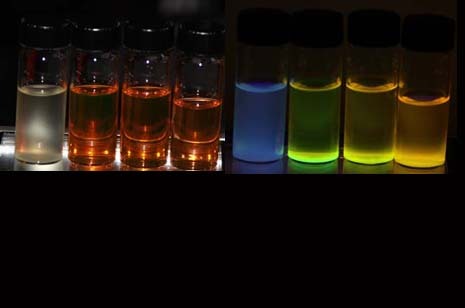Researchers using novel materials to build photovoltaic cells say their efforts could nearly double the efficiency of silicon-based solar cells.
The cells being developed by teams from the University of Arkansas and Arkansas State University have the potential to achieve a light-to-energy conversion rate, or solar efficiency, of 40 percent or better, according to the researchers.
The photovoltaic cells are intended for use in satellites and space instruments. Currently, the silicon-based solar cells that NASA uses in its satellites and instruments have efficiencies of only up to 23 percent, according to NASA statistics.

And today it was announced that the research teams are getting more money–a total of $1 million in new funding–to further their work. Of that, about $735,000 will come from NASA, $237,000 from the University of Arkansas, and $86,000 from Arkansas State.
Omar Manasreh, professor of electrical engineering at the Optoelectronics Research Lab at the University of Arkansas, has been developing the technology so far with a $1.3 million grant from the U.S. Air Force Office of Scientific Research. He leads the research team along with Liangmin Zhang, assistant professor at Arkansas State.
“It [the grant] will create new opportunities for further development in the field of novel photovoltaic materials and devices,” Manasreh said in a statement.
Manasreh has been testing two separate methods for growing metallic nanoparticles using a novel combination of materials as the semiconductor. While CIGS (copper, indium, gallium and selenium) solar cells are not uncommon, Manasreh is using a variation of CIGS-based cells–CuInSe2 and CuInGaSe2–to generate molecules that bind to a central atom and that are known as volatile ligands. The nanocrystals can then be converted into thin-film solar cells, or incorporated into nanotubes, by combining the material with either titanium dioxide or zinc oxide. His second approach uses indium arsenide (InAs) a material commonly used in infrared detectors.
“The second approach uses molecular beam epitaxy, a method of depositing nanocrystals, to create quantum dots made of indium arsenide (InAs). Quantum dots are nano-sized particles of semiconductor material,” according to the University of Arkansas.
When exposed to ultraviolet light, the nanocrystals grown in liquid emit brighter light enhancing the response of the nanocrystals. The phenomenon shows the potential to increase the energy conversion efficiency of the materials (see photo).
This research team isn’t the first to experiment with growing nanoparticles using liquid. In 2007, Calif-based company Innovalight developed a “silicon ink” for creating crystalline silicon solar cells that works by inserting nanoparticles into a solvent, pouring the liquid on a substrate, and then removing the liquid to be left with a silicon crystalline structure. At the time, the solar cells made from the method had a 22 percent efficiency. Innovalight was acquired by Dupont earlier this year.
 Follow
Follow